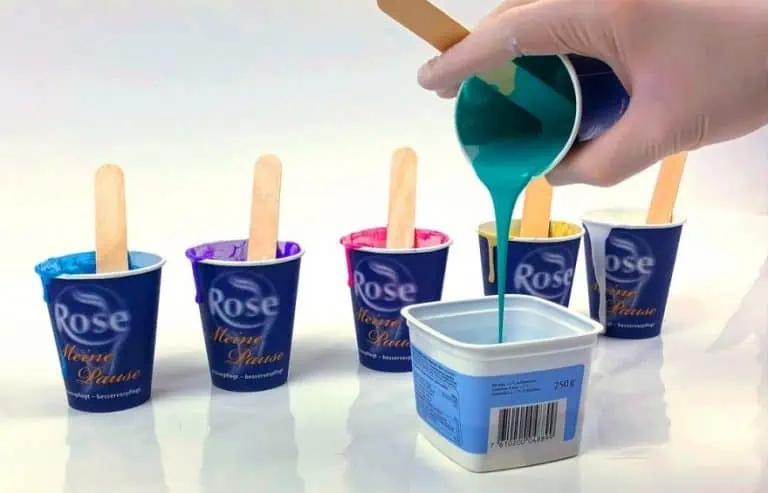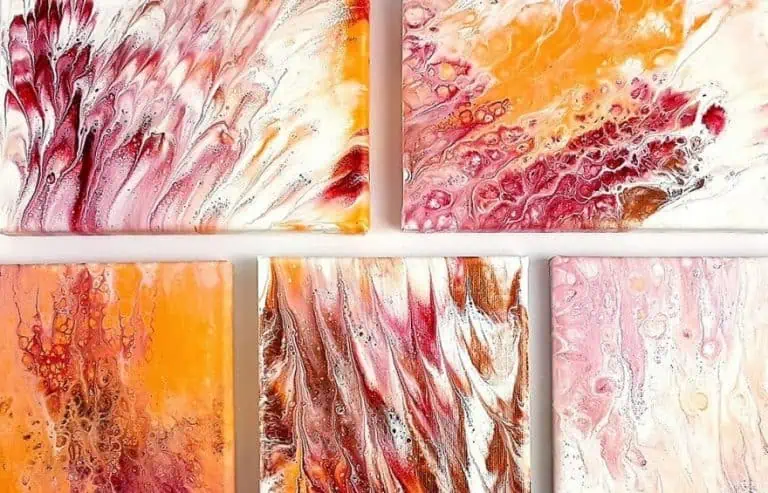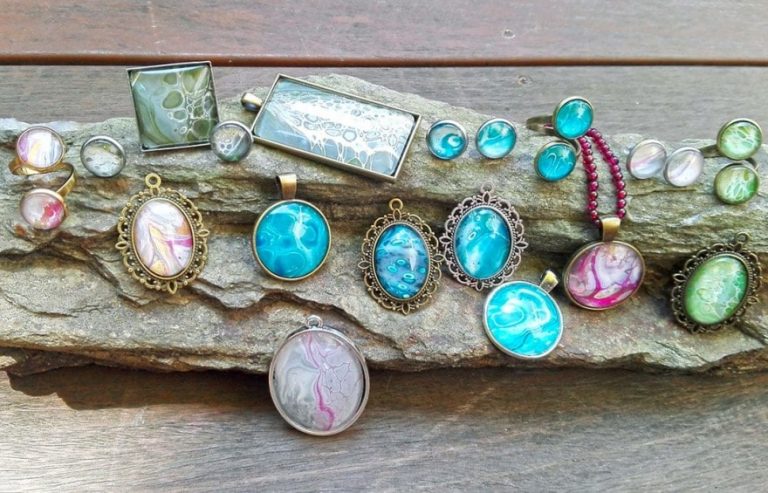Acrylic Pouring Basics: Learn How to Acrylic Pour
This post may contain affiliate links. We may earn a small commission from purchases made through them, at no additional cost to you.
We show you in this article how to acrylic pour and all the Acrylic Pouring Basics. Acrylic Pouring is based on acrylic paint, which is brought into a liquid, pourable consistency with the addition of Pouring Medium and other additives as required. Depending on the technique, this liquid paint is then poured into each other or tilted onto the canvas and distributed by means of the inclination of the painting ground. Depending on the choice of the colour, the medium and the additives, different effects are created.
Why is Acrylic Pouring so Popular?
- Even for beginners: no special artistic skills are required for Acrylic Pouring, so anyone interested can get started with Acrylic Pouring without any problems.
- Low material costs: It doesn’t take much to start with acrylic casting. You can get started with low-cost acrylic paints and a few other materials.
- Even for the impatient: You don’t need half a day to create a picture with one of the acrylic pouring techniques. From as little as half an hour you can pour your own works of art.
- Last but not least: High fun factor! It makes it easy to mix colours and create something. There is something meditative and relaxing about it, so ideal to switch off after work or at the weekend and be creative.
Acrylic Pouring Basics – How to Acrylic Pour?
Acrylic paint is naturally used as the basis for acrylic pouring, which is brought into a liquid, pourable consistency with the addition of pouring media and other additives as required. Depending on the technique, this liquid paint is then poured into each other or tilted onto the canvas and distributed by means of the inclination of the painting ground. Depending on the choice of colour, medium and additives, different effects are created.

Acrylic Pouring FAQ: The Most Important Terms Explained
What Does Acrylic Pouring Mean?
- In Acrylic Pouring, acrylic paints are poured onto a painting surface, for example a canvas, and influenced by the movement of the surface in its colour gradient. In addition to a mixture of paint, pouring medium and water, breathtaking abstract works of art can be created with the help of silicone oil and other additives.
What are Cells and How do they Develop?
- Every acrylic paint has a certain density, which results from its composition of pigment, binder and solvent. When the different layers of paint are applied, depending on the density of the underlying layer of paint, part of the paint is pushed upwards. In this way, the cells in your pictures are simplified and explained.
What Do I Need Silicone Oil for?
- Depending on the pouring technique, the colours mix too much and therefore no cells can develop. For this reason silicone oil or also hair oil is used, so that this mixing can be reduced. The oil is mixed into the colour in small additions and stirred only slightly.
What’s a Final Varnish?
- The final varnish is the top layer of a painting that protects it and ensures a uniform gloss effect. A good varnish preserves the image and brings out the full colour brilliance.
How does Acrylic Pouring Work and How to Learn the Pouring Techniques?
- There are several acrylic pouring techniques you can learn. In the linked guide you’ll finde all of them and how to achieve the desired results.
What Pouring Supplies do I need?
In addition to acrylic paints and a medium, you will also need some other things, some of which can already be found in a normal household. You can find a list with the required materials in our article “Acrylic Pouring supplies – What you need for your pourings“. With these Acrylic Pouring basics, you’ll achieve your first wonderful pour paintings.
In 2005, Charlene completed her wellness degrees in therapeutic aromatherapy and reflexology at the International School of Reflexology and Meridian Therapy. She worked for a company offering corporate wellness programs for several years before opening her own therapy practice. In 2015, she was asked by a digital marketer friend to join her company as a content creator, and it was here that she discovered her enthusiasm for writing. Since entering the world of content creation, she has gained a lot of experience over the years writing about various topics such as beauty, health, wellness, travel, crafting, and much more. Due to various circumstances, she had to give up her therapy practice and now works as a freelance writer. Since she is a very creative person and as a balance to writing likes to be active in various areas of art and crafts, the activity at acrylgiessen.com is perfect for her to contribute their knowledge and experience in various creative topics.
Learn more about Charlene Lewis and about us.








